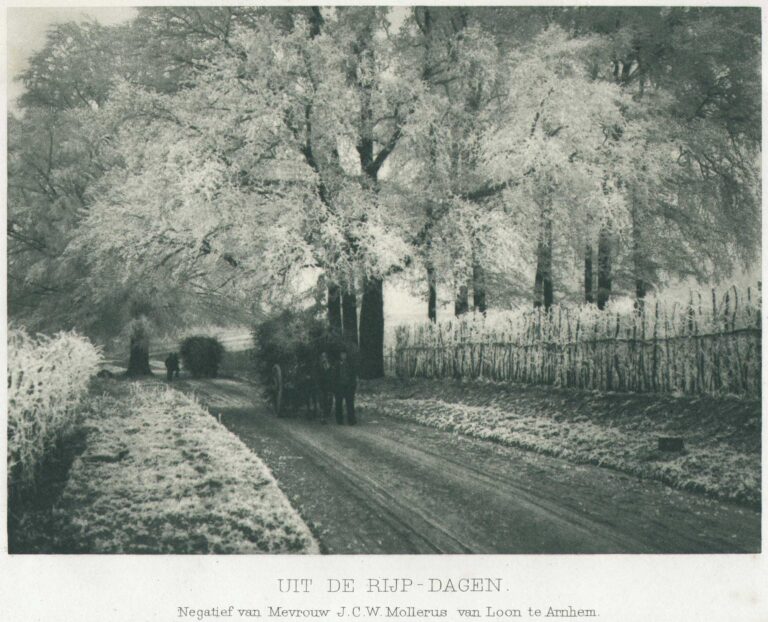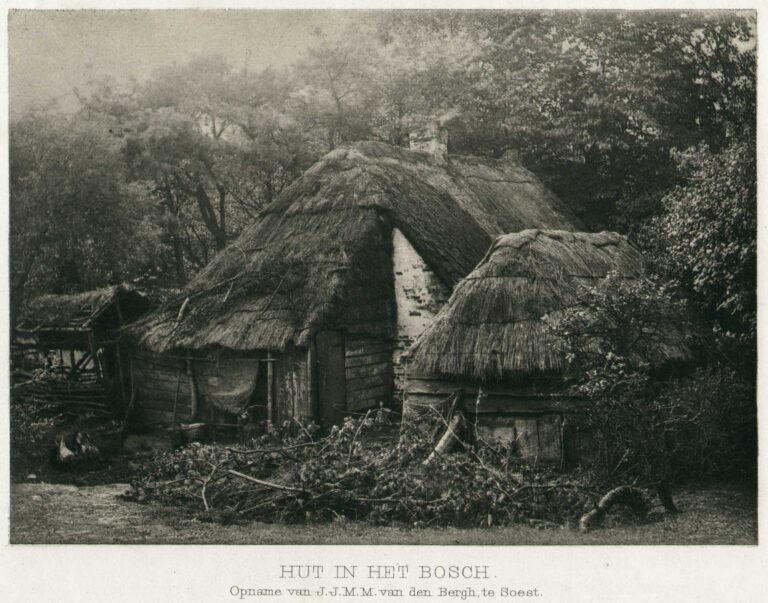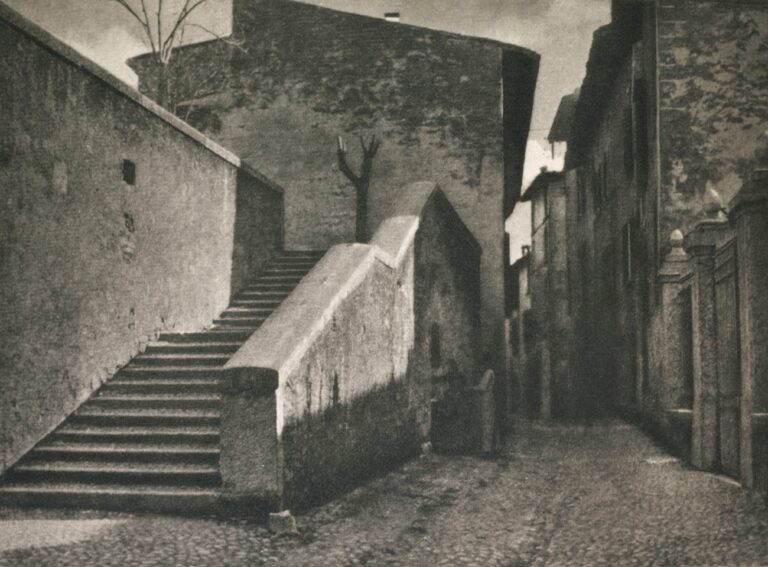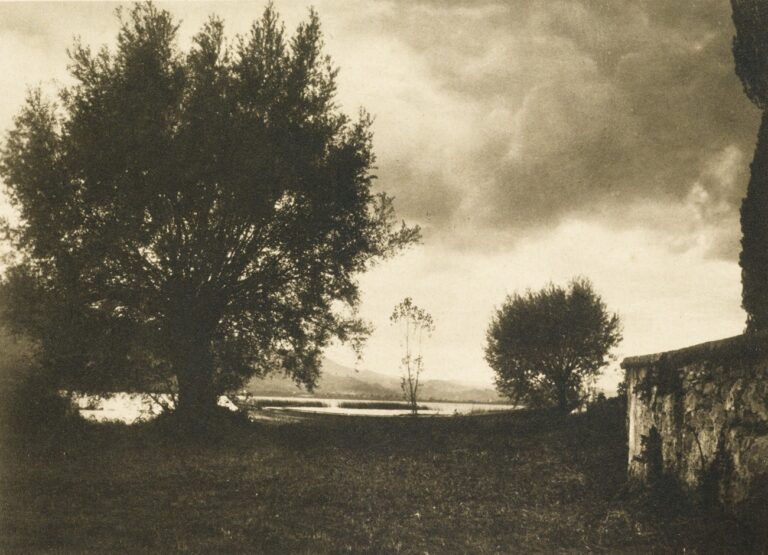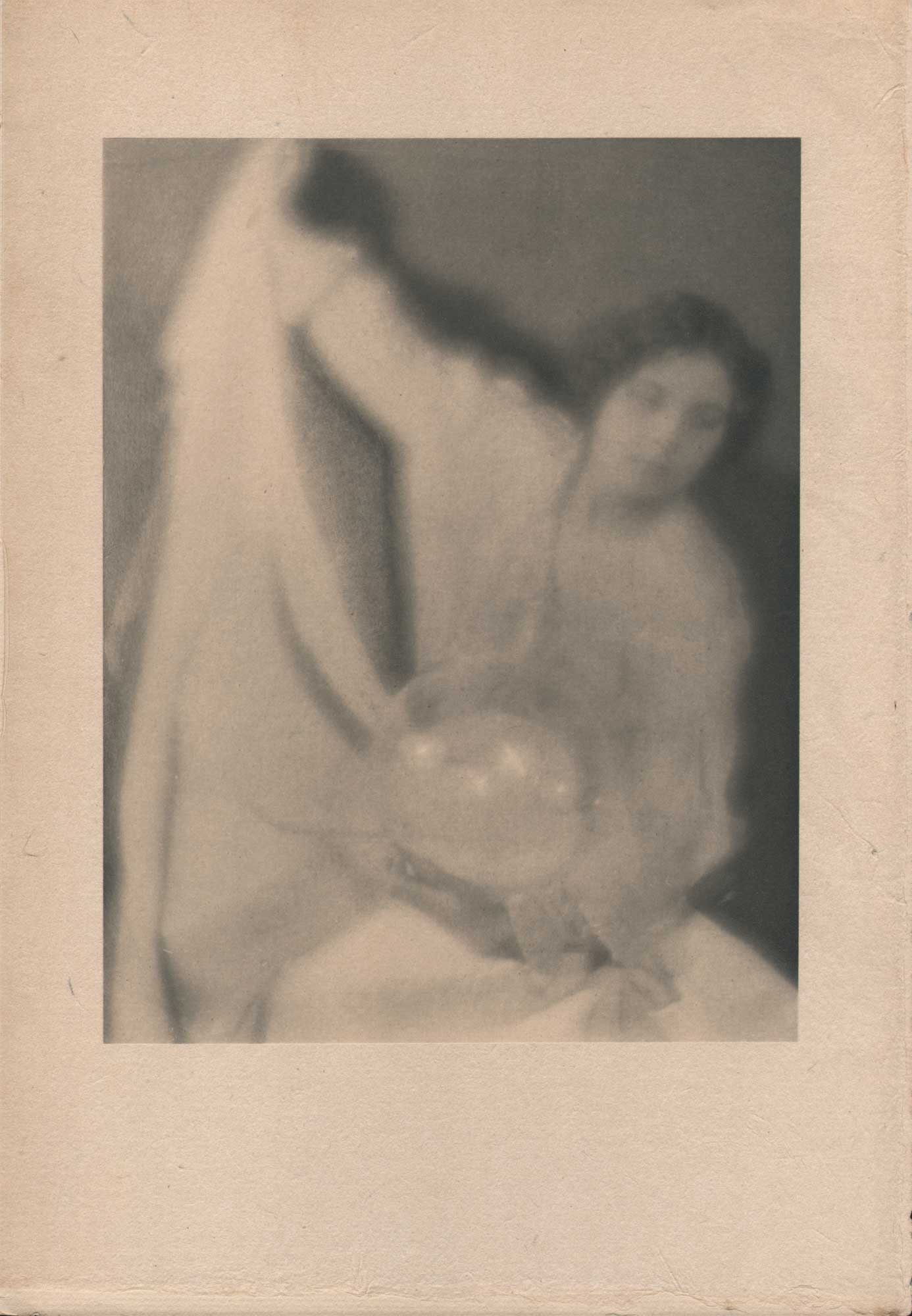
Experiment 28
The model Mabel Cramer holds a large glass ball, one of a series of photographic “experiments” of her and another model, “Miss Thompson” jointly done by Photo-Secession founders Alfred Stieglitz and Clarence White in 1907. The following analysis of this collaboration was included with the sale of a vintage example of the photograph known as “Torso” (of Miss Thompson) by Christie’s Auction House:
In 1907 White and Stieglitz worked together in Clarence White’s studio at 5 West 31st Street, creating sets and arrangements, posing and photographing the two models, Miss Thompson (her first name remains a mystery) and Miss Mabel Cramer (The Alfred Stieglitz Collection, p. 490). A note appeared in Camera Work, Number 27 giving a brief overview of the project. The statement is, in some respects, an axiom for the Photo-Secessionists’ attempt to prove photography painting’s equal. It read:
“A little over two years ago, Alfred Stieglitz and Clarence H. White, in consequence of various lively discussions with some painters about portrait painting and the impossibility of the camera to do certain things, began a series of experiments to demonstrate the pliability of straight photography as a medium for portraiture and figure work and so disprove the painters’ contentions. These experiments were to serve at the same time as some technical tests of a certain brand of plates and a new lens. Although in the course of two weeks a series of sixty negatives was made, circumstances made it impossible to produce more than a few finished prints…. The negative of the “Torso”, it might be added, was made by gaslight.” (Camera Work, Number 27, “Our Illustrations”, p. 47).
It is believed that the majority of prints from the collaboration were made by White although there is at least one example in the Alfred Stieglitz Collection at the Metropolitan Museum of Art which is inscribed by Stieglitz as having been printed by him. (op. cit., no. 561, p. 491).
As is widely known White and Stieglitz had a falling out in 1912 in which Stieglitz officially ended his involvement with the Photo-Secessionist movement. In the correspondence which precipitated the break-up Stieglitz divorced himself from any involvement with the jointly made pictures. He wrote to White in May, 1912: “One thing I do demand, and I put you on your honor, and this is that my name be not mentioned by you in connection with either the prints or the negatives….Unfortunately I can not wipe out the past…” Indeed, Stieglitz could not wipe out the past as the Torso and the three other images reproduced in Camera Work were credited to the two photographers. The Torso (Miss Thompson) is perhaps the most significant nude study of the pictorialist era, having been created by the two men most responsible for promoting this aesthetic in the United States. Certainly, having been chosen for reproduction in Camera Work gave a patina of great importance to the image. As an interesting counterpoint, in regards to this dissolution and The Torso, 1907 was also the year Stieglitz made perhaps his best known photograph, The Steerage.
